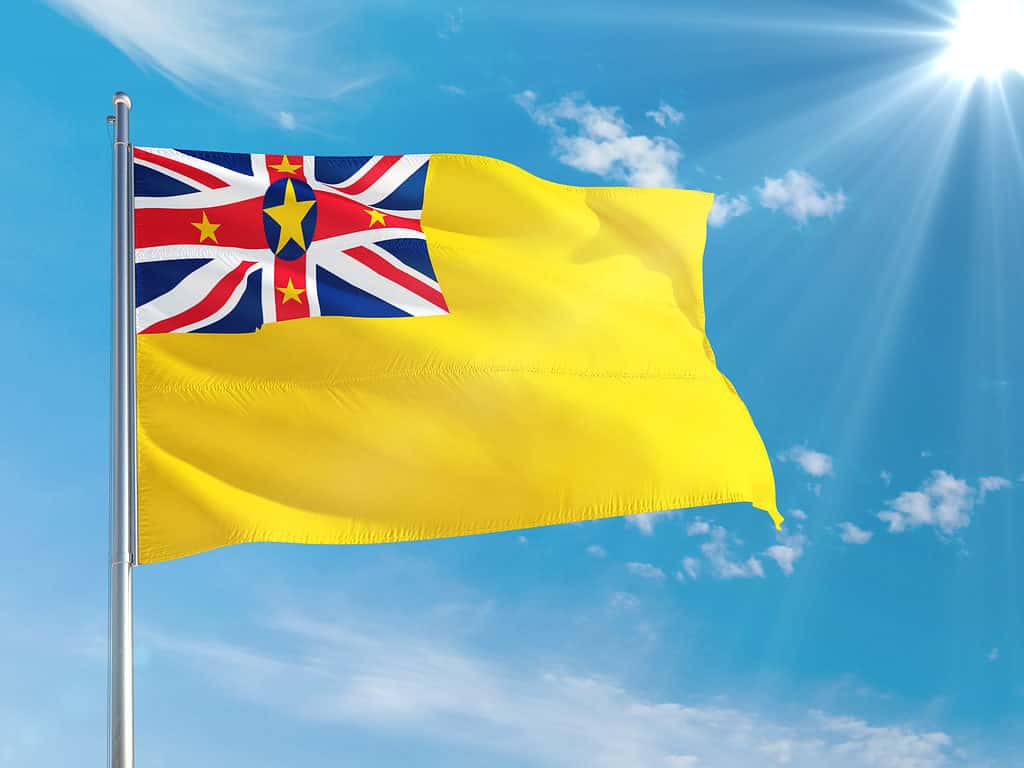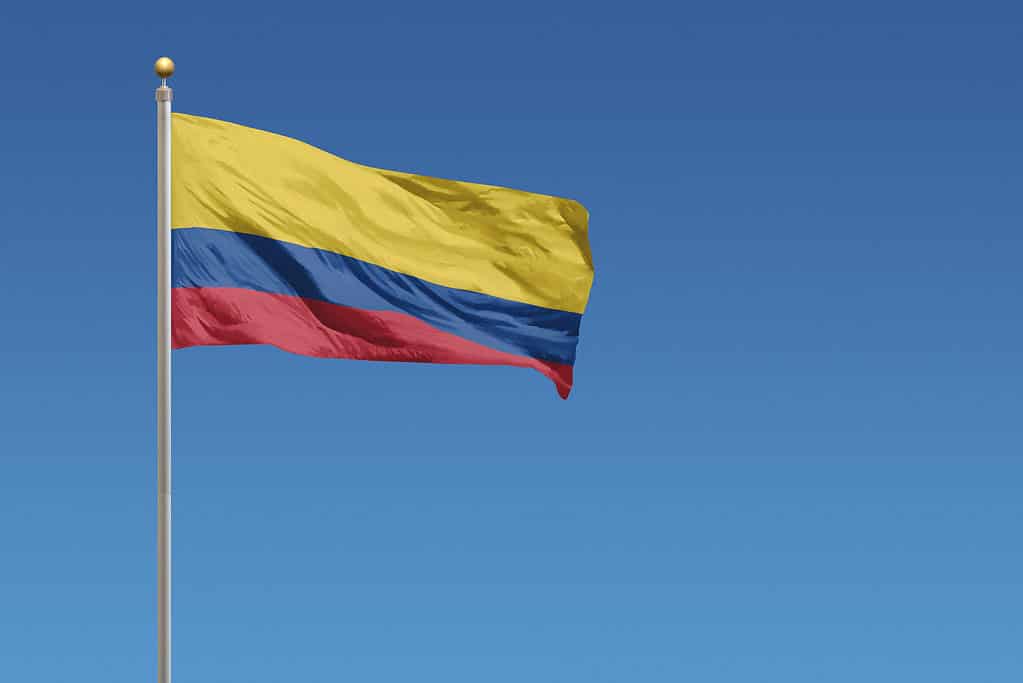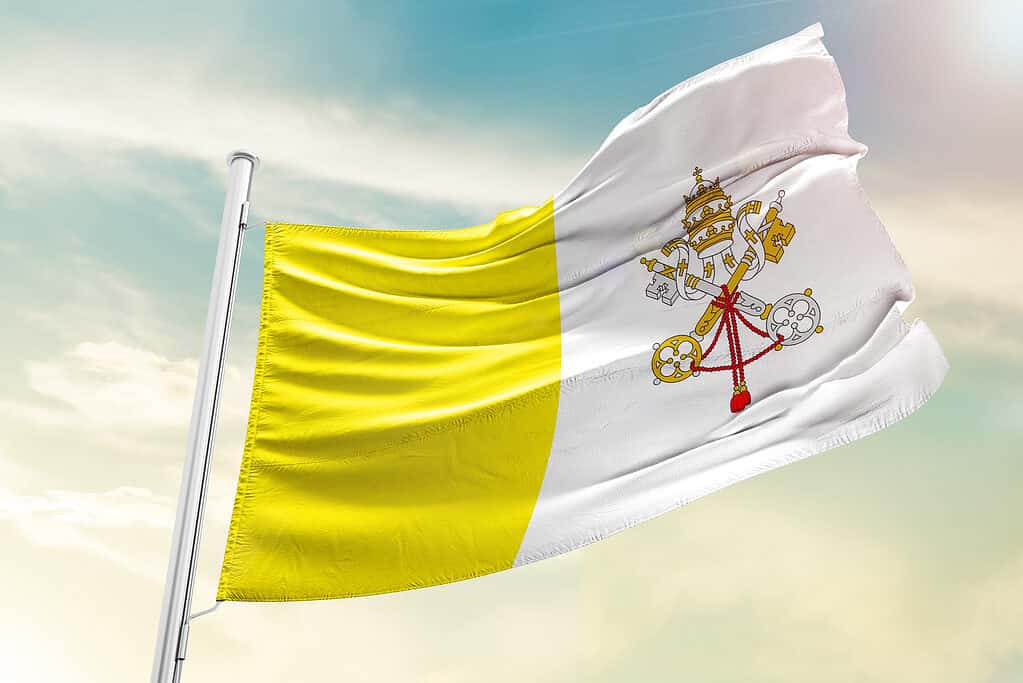The color yellow appears on the flags of a large number of countries. For instance, the third most common color on flags worldwide is yellow, and the most often used shade of yellow can be seen in flags from five different continents. This article will focus on a subset of flags, specifically those in which yellow is the primary hue. This criterion is met by the flags of five different countries!
5 Countries with Yellow Flags (The Most Dominant Color):
The color yellow is generally associated with the sun, prosperity, vigor, and/or justice. Flags often feature color schemes that include yellow and hold deeper meaning, denoting principles or commitment. Most of the world’s 192 sovereign nations fly flags with three colors (tricolors), with red, white, and blue being the most common.
Over half (89) of all national flags have the color yellow somewhere in their design. Five flags are presented below, all of which are the only ones to have yellow as the primary color (more than 50% of the design). Niue, Ecuador, Columbia, Brunei Darussalam, and Vatican City are the countries that hoist these flags.
The Flag of Niue

The flag of Niue is a yellow field with the Union jack symbolized in the upper left corner.
©Black Pearl Footage/Shutterstock.com
Niue, a Pacific island, flies a flag that features a yellow field and a little Union Jack in its top left corner. The largest of the five stars on the Union Jack is centered, with the other four evenly spaced throughout the horizontal and vertical stripes. Niue is a former British colony, which is symbolized by the Union Jack flag.
The four stars on the design of the flag represent the Southern Cross constellation, which is prominent in the sky in this region, and the leaf’s golden tint is said to signify friendly relations with New Zealand. Niue is a territory that is affiliated with New Zealand at the present time, although the flag features a large star in the center of a blue circle as a sign of the island’s independence.
The Flag of Ecuador

The current flag of Ecuador was adopted on September 26th, 1860.
©Maxim Studio/Shutterstock.com
The initial flag of Ecuador was adopted on June 2, 1822, and it was white with a white star in a blue canton. On March 6, 1845, a flag with white, blue, and white vertical stripes with three white stars was adopted. In the latter part of that year, we added another star, making the total number of heavenly bodies 7. The country adopted its current flag of uneven yellow, blue, and red stripes on September 26, 1860, under the leadership of Gabriel Garca Moreno. The original ratification took place on January 10, 1861, and a second confirmation occurred on December 5, 1900.
When flown internationally or for official purposes, the flag of Ecuador is marked with the country’s coat of arms, setting it apart from the flag of Colombia. The condor is depicted on an oval shield that also has snow-capped mountains, a river, a steamer, and the sun. The design is finished off with fasces (bundle of rods), a wreath, and draped flags.
The Flag of Columbia

The flag of Columbia is a horizontal tricolor of yellow, blue, and red, with yellow being the largest section.
©Derek Brumby/Shutterstock.com
In December of 1819, Colombia adopted the horizontal tricolor of yellow, blue, and red in which “The Liberator,” Simón Bolvar, fought at the Battle of Boyacá on August 7, 1819, guaranteeing Colombia’s independence. A white eight-pointed star was put in the middle of the flag in 1834, and the stripes went from being horizontal to vertical. Later, coats of arms began to appear on the flag’s design for various governmental reasons. On December 10, 1861, the government restored the horizontal yellow, blue, and red flag, which is now the official national flag. However, this resulted in the yellow stripe becoming wider than the other two stripes.
The flag’s canton can feature unique emblems for recognizing the diplomatic corps, navy vessels, private vessels, and the armed forces. Although many identical symbols had been used in the previous fifty years, their precise artistic rendering had changed from government to regime in response to shifts in power.
The Flag of Brunei Darussalam

The flag of Brunei features the centered red crest of Brunei on a yellow field cut by black and white diagonal stripes.
©iStock.com/pavlofox
Brunei’s first flag was a simple shade of yellow. The current Bruneian flag design features a black and white logo in the center of a yellow field divided by two diagonal stripes in black and white. In fact, Brunei is the only country whose entire flag field is yellow, apart from Niue. Yellow’s negative connotations (meaning quarantine) as a flag color to some, as seen in the previous imperial banners of Russia and Austria, along with its connection to diseases, may explain why the color is rarely used elsewhere on an entire flag field.
The Flag of Vatican City (Holy See)

The flag of Vatican City uses the Papal flag.
©em_concepts/Shutterstock.com
Despite its name, the Vatican City State is actually the world’s smallest independent nation. As a sovereign nation in its own right, Vatican City uses the Papal Flag (also known as the Flag of Vatican City or the Flag of the Holy See) as its official insignia. Central Italy, which includes the city of Rome, was known as the Papal States and was ruled by the pope for centuries. To this day, the tiara sits atop a pair of gold and silver keys that are crossed and held together with a crimson cord on the Vatican City coat of arms and flag.
It was in the early 19th century when the flag’s signature yellow and white stripes first appeared. Once upon a time, the papal banner was a crimson and gold design, representing the colors found on the pope’s and Rome’s respective coats of arms. There was a formal raising of the current flag on June 8, 1929. It now flies above nunciatures as well as other buildings with extraterritorial privileges outside Vatican City.
Click here to learn about every single flag in the world!
The photo featured at the top of this post is © patrice6000/Shutterstock.com
Thank you for reading! Have some feedback for us? Contact the AZ Animals editorial team.






